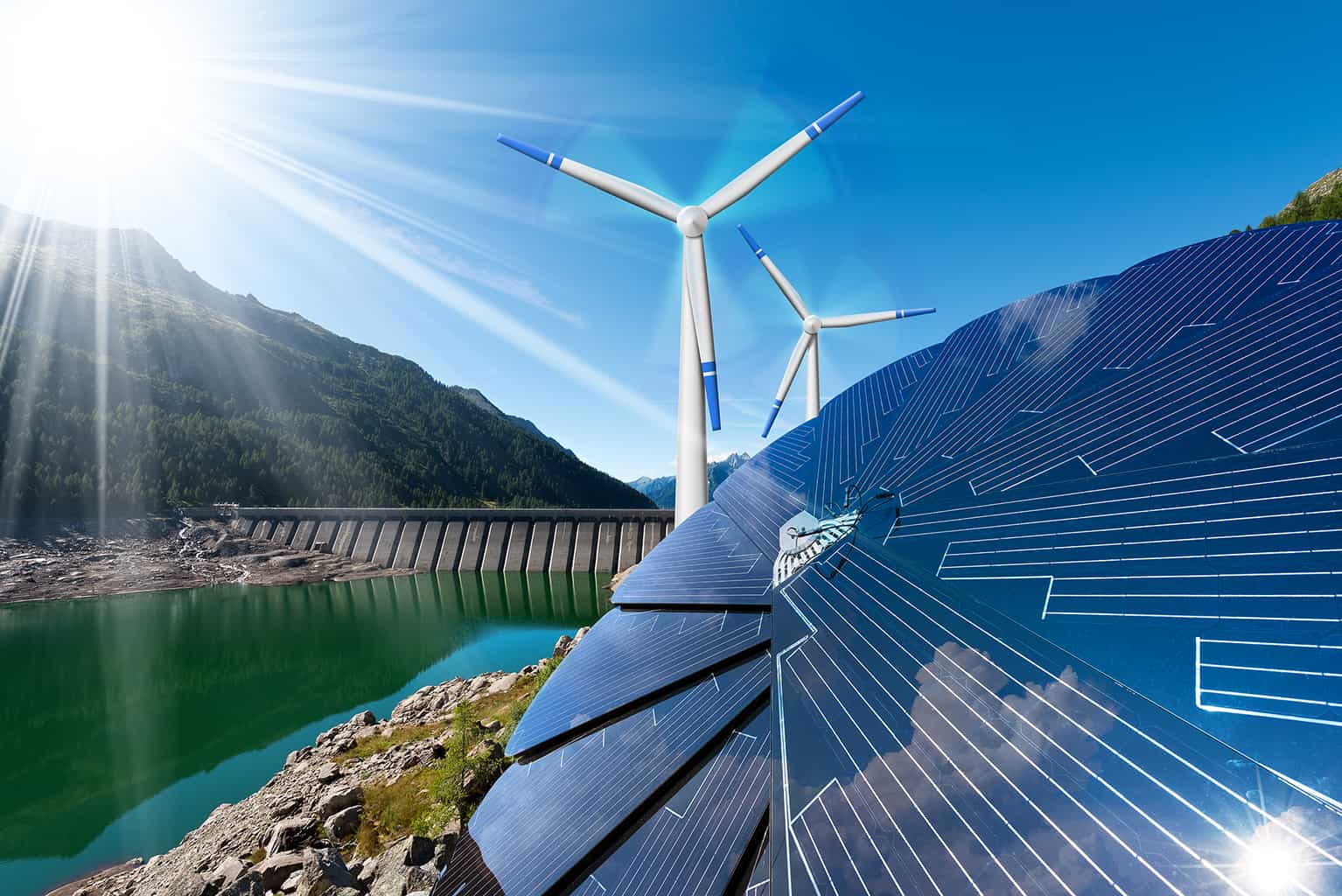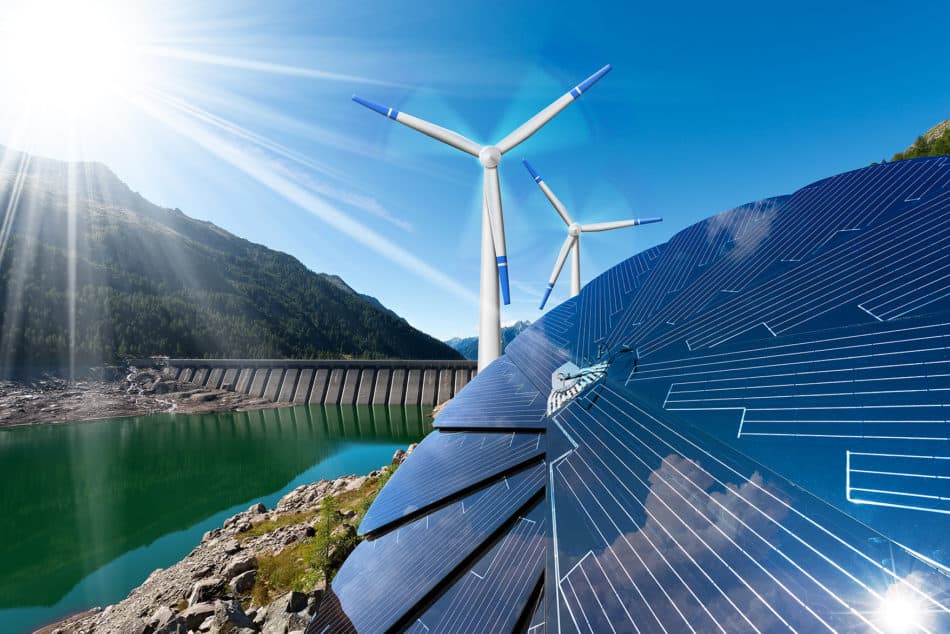
Photovoltaic : where are we?
4 minutes of reading
“At the end of the crisis [health linked to the Covid-19 epidemic], the questions [regarding energy policy] will need to be readdressed.” So said Pascal Roger, president of the Federation of energy environment services (Fedene) to News Tank Cities on 01 April 2020. Currently, new renewable energies represent a prospect for ecological transition for this sector with photovoltaic in the lead, between giant power plants and innovative installations. Where are we ?


An energy in high demand
Behind the demand for photovoltaic installations there is a growth in demand for a primary energy source worldwide. This demand, which saw an exceptional decrease during the coronavirus crisis[1], follows a strong trend in rapid growth worldwide, estimated by some to be +15% in the coming 5 years. Among the electrical installations deployed to cope with this increase in demand, new renewable energies rub shoulders with fossil fuel plants (coal, gas and petrol) as well as nuclear energy. Indeed, excluding hydroelectricity, NREs only produce 4% of the energy mix worldwide. Among the new renewable energies, demand is now for photovoltaic solar panels in the first instance which are more competitive than the other systems, in particular in geographical locations with favourable climatic conditions. Other technologies use solar energy: concentrated solar power, less widespread, and solar thermal energy which produces hot water without conversion into electricity. The market in photovoltaic solar panels is progressing towards maturity, the price of the panels becoming a differentiating criterion. As such, Chinese production capacity largely dominates production worldwide, in particular regarding the base material for 90% of the panels: silicon cells. This increase in production volume, combined with productivity gains, has enabled prices to drop such that the installation of photovoltaic production has exploded worldwide over ten years: the installed power in the world has grown on average by 24% per year between 2014 and 2017, with 60% of investment in developing countries. In France, the long-term energy program (PEE) plans to increase capacity by 4- or 5-fold from now until 2030. The professionals in the sector are banking on very high growth worldwide for decades to come. The market takes different forms. On the one hand, the giant generating plants which meet the largest energy requirements by occupying large areas in the form of fields of solar panels. At the other end of the scale are installations with smaller generating capacities, more evenly distributed across the country, installed by members of the public at their own expense and consisting of a few panels on their roof or in their gardens. Taking this to its logical conclusion, some of these will reach the point of self-sufficiency directly connecting their solar installation to the domestic electric system without being connected to the grid. This virtuous model allows individuals who have made this choice to gain a better understanding of their daily energy requirements and satisfy these through their own local installations. However this requires a lot of thought beforehand to limit electrical consumption and choose energy-saving appliances in order to be able to cover their usage through their production. Batteries will also be necessary to smooth the temporal difference between production, which only operates during the day, and consumption.What is the environmental balance with regard to manufacture?
The increase in photovoltaic production volume in China has enabled prices to be reduced but has also had undesirable consequences for local working conditions and for the environment mainly with regard to the discharge of sludges and powders from the refining of sand-based silica. However, it is worth noting that silicon-based photovoltaic solar panels, which represent about 90% of the market, do not use rare earths in their manufacture but low quantities of silver, aluminium, copper and sometimes plastic. It is good to note that silicon is 100% recyclable which results in solar panels being between 95% and 99% recyclable according to the manufacturers, indeed almost 100% for Alsace producer Voltec Solar. This ensures that the natural resources extracted for their manufacture will be used beyond the lifetime of the initial panel, estimated to be around 25 years. Another technology, “thin film” photovoltaic panels, is much more harmful to the environment due to the use of rare metals (Tellurium, Cadmium, Indium) which are potentially toxic for installers and users if the panels break accidentally. However, they only represent 10% of the market.Possible innovations
Beyond silicon and thin film panels, a third technology is undergoing development based on organically-sourced elements. Asca films, developed by Armor and INES at Nantes, use bio-sourced materials and have other advantages: they are ultra-thin, light and flexible, semi-transparent and recyclable, they can adapt to more diversified architectural shapes, such as domes, glazed surfaces of buildings and agricultural greenhouses. It remains to be seen what the price and energy yield of this system will be to work out the position reserved for it in this promoter market. Armor has invested in production facilities with a capacity of one million square metres of photovoltaic film per year with the aim of lowering costs. Another possible innovation would be to improve the yield of the photovoltaic panels. To do this, applied mathematics researchers such as Athmane Bakhta are working to optimise the ideal characteristics of the base material in order to improve conduction of electric current under the effect of light and thus capture a greater fraction of the solar energy. Currently, the best photovoltaic panels provide an energy yield of about 28%. Lastly, it is necessary to improve our capacities for storing electrical energy in order to use this energy outside production periods. These batteries themselves represent an environmental challenge as the manufacturing process of some of them causes pollution, like Nickel Metal Hydride NiMH which uses rare earths in its production. Another way of storing this energy is to convert it into another type of energy, for example by pumping water into dam reserves during peak production periods and releasing it during peak consumption periods.Where can solar power plants be built ?
Another issue is the vast areas of land consumed by the installation of photovoltaic production plants. These indeed consume large amounts of space, above all if compared with fossil fuels which have high energy concentrations and still more when compared with nuclear energy which is both carbon-free and non-renewable. This space unfortunately often encroaches on the agricultural land needed to produce our food which forms the basis of our economy. How can we respond to this dilemma? Placing photovoltaic panels onto existing structures, for example on the roofs of houses facing in the right direction, prevents encroachment onto agricultural land. Thus, any initiative which encourages individuals to order and install quality equipment is worthwhile adopting. Other alternatives have been proposed: agrivoltaic projects which consist of the installation of solar plants above agricultural operations, so coordinating the two uses. The automatic orientation of articulated panels would regulate the solar input to the soil while producing electricity. An experiment has already been installed in the South of France, while Japan is investing massively in this method due to their lack of available land. Lastly, a new solution consists of using calmed water tables for vast photovoltaic installations. This approach underwent experimentation initially in China and Japan before arriving in Europe, for example with the Piolenc plant in the Vaucluse with 47,000 panels producing 17 MWc. This solution has many advantages: it avoids any conflict of use with agricultural land, causes little harm to biodiversity, limits water evaporation and above all breathes new life into abandoned areas: lakes, ponds, irrigation channels and protective dykes – as in the Netherlands where it has been estimated there is potential floating photovoltaic production of 8 GW – and dam reservoirs. Currently, some dream of going even further by adapting this technology to the high seas. With intelligent systems which enable orientable floating panels to be repositioned according to swell and wind forces, some estimate that we could build veritable floating islands in the open sea. This would enable them to be positioned where navigation is impossible, such as for example in the unused spaces between offshore wind turbines. One of the advantages of this system, if it works, is its resilience: a floating power plant at sea would not of course be affected by rising sea levels, estimated between 1 metre and 1.80 metres at the shores around the North Sea in 2100, according to the University of Utrecht. A new horizon for decentralised energy production. [1] At the time of writing, France is in the third week of lock-down as part of the Covid-19 crisis, and a lowering of demand for electricity of 10 to 20% has been observed over the first weeks.
[1] At the time of writing, France is in the third week of lock-down as part of the Covid-19 crisis, and a lowering of demand for electricity of 10 to 20% has been observed over the first weeks. More reading
Read also




What lies ahead? 7 megatrends and their influence on construction, real estate and urban development
Article
20 minutes of reading

